Costa Rica is a fishing paradise with access to two oceans and tons of freshwater fisheries. The Caribbean Sea hugs the east coast and the Pacific Ocean spans the west coast. You’ll find accessible ocean towns and some very remote areas on both coastlines.

And that means access to the deep seas. Here lie some of the most impressive game fish on the planet. And that’s why I’m here today. I’ll talk you through Marlin fishing in Costa Rica. There are few destinations in the world with such consistent Marlin fishing, and I’ll let you in on all the tricks of the trade. By the time you’re done reading, you’ll be searching for the next flight out!
Costa Rica Marlin: Understanding the Species
Four primary varieties of Marlin exist with distributions ranging from the Pacific, Indian, and Atlantic Oceans. Many Marlin are highly migratory and they can appear just about anywhere. Tropical ocean environments contain a large number of the world’s Marlin populations but they also appear in the cold waters of the Atlantic.
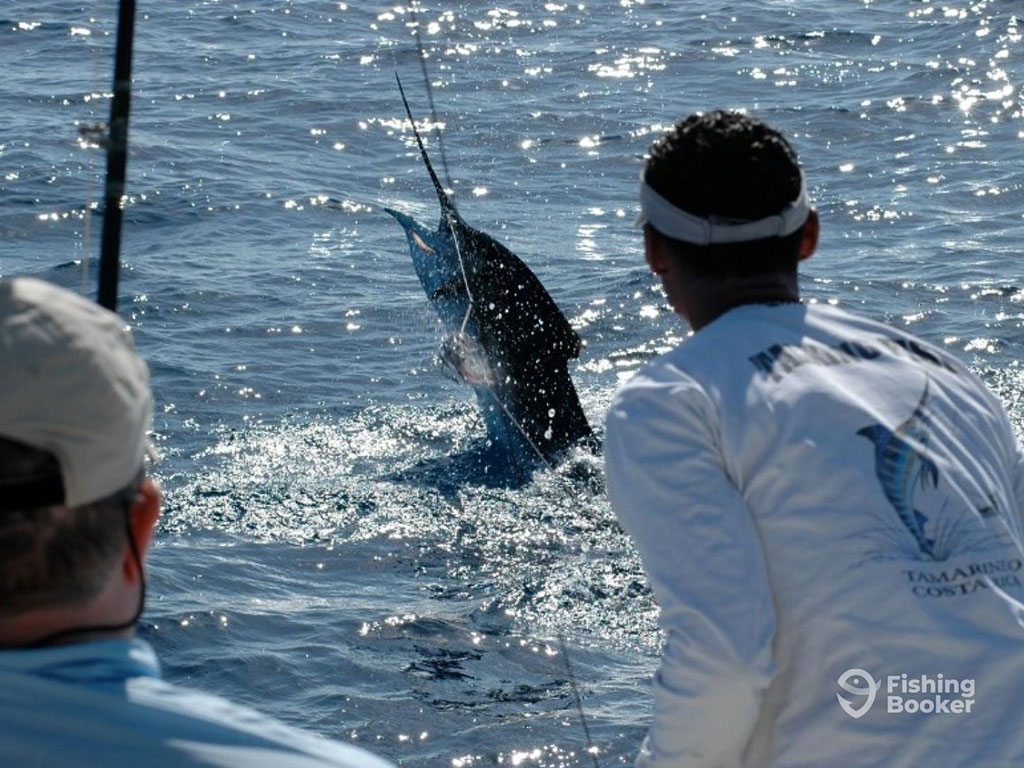
In Costa Rica, you’ll find Blue, Striped, and Black Marlin. Blue Marlin are far and away the most common but all three species are caught throughout the year. In some areas, they’re even available year-round.
Blue Marlin. The Pacific Blue Marlin can reach huge sizes with fish in the 6–7 foot range being caught every year. They swim in warm ocean waters and can dive deep to feed or go into frenzies near the surface. And it’s the surface action that draws anglers from around the world to the waters in Costa Rica.
Black Marlin. The average Blue Marlin is bigger but Black Marlin can exceed their size as well. Fish up to 15 feet have been caught with incredible heft. Imagine trying to land a 1,500 lb Black Marlin! They aren’t quite as fast as a Blue Marlin but they are serious brutes.
Striped Marlin. Easily identified by their stripes, these fish are extremely fast and agile. Striped Marlin don’t reach the same sizes as Blue Marlin and top out under 500 pounds. They remain a serious challenge and are difficult to land, though.
What makes Costa Rica Marlin fishing so special?
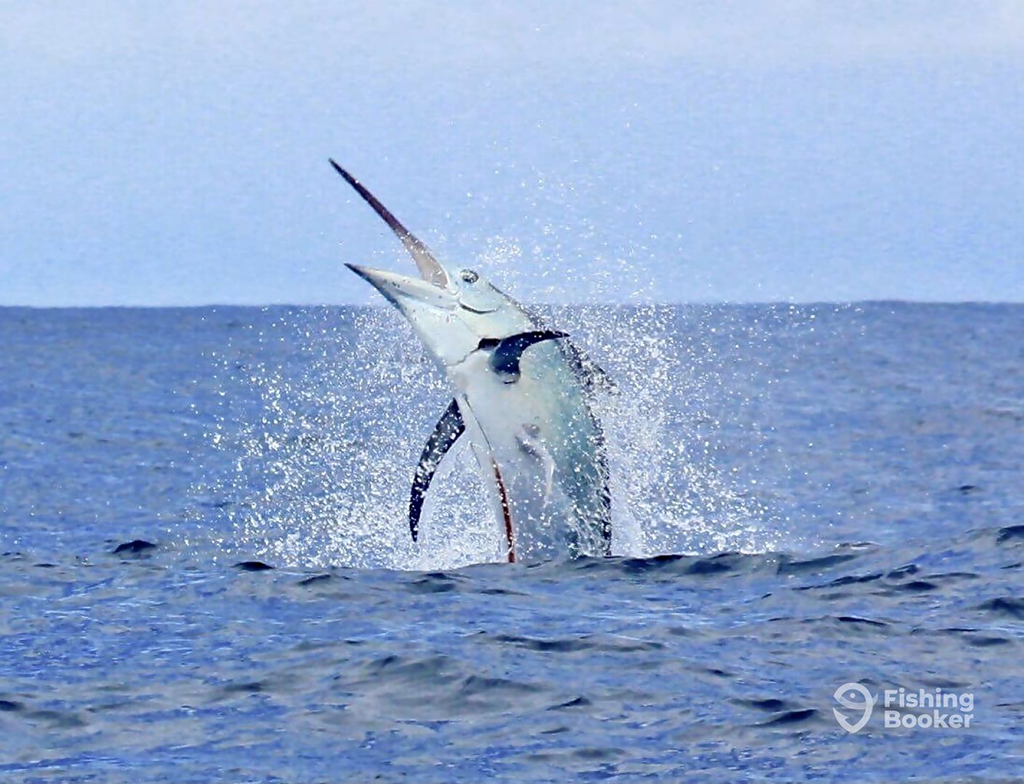
The tropical waters of the Pacific Coast have abundant food sources and perfect conditions for Marlin. The southern regions have year-round Marlin and the entire coastline has access to great fishing much of the year.
While Marlin are a bucket list target in Costa Rica, you’ll also have additional encounters with a wide variety of other species. Sailfish, Mahi Mahi (Dorado), Roosterfish, Yellowtail, Yellowfin Tuna, and many more opportunities are present. After landing a huge Marlin, anglers are often tired from the fight and can fill in the remainder of their trip with multiple other species.
Costa Rica Marlin Fishing Seasons
You can target Marlin throughout the entire year but they have stronger numbers and a more active presence in certain months. Look to December and January for the best fishing. The winter dates align perfectly for folks living in cold climates. Take a tropical vacation while the fishing peaks!
June and July are also very active months with strong numbers of Marlin. While these months offer great fishing, many visitors prefer the earlier windows ranging from November to April as the climate is much more amenable. Ultimately, you can choose the best month that suits your schedule while knowing there are likely Marlin around.
How to Catch Marlin in Costa Rica
You might get lucky and snag a Marlin while trolling in a nearshore Panga but it’s worth investing in a high-quality charter for this species. Marlin require specialized tackle, expert knowledge of the fishery, and captains who are really honed into the species.
There are a number of ways to rig and fish for all three species of Marlin. Their long bills and hard mouths make them notoriously difficult to hook. In many cases, the fish will strike and make a blitzing run with jumps that throw the hook. At the end of the day, every Marlin rig requires perfect connections and terminal tackle capable of handling extraordinary shock.
Rigging for Marlin
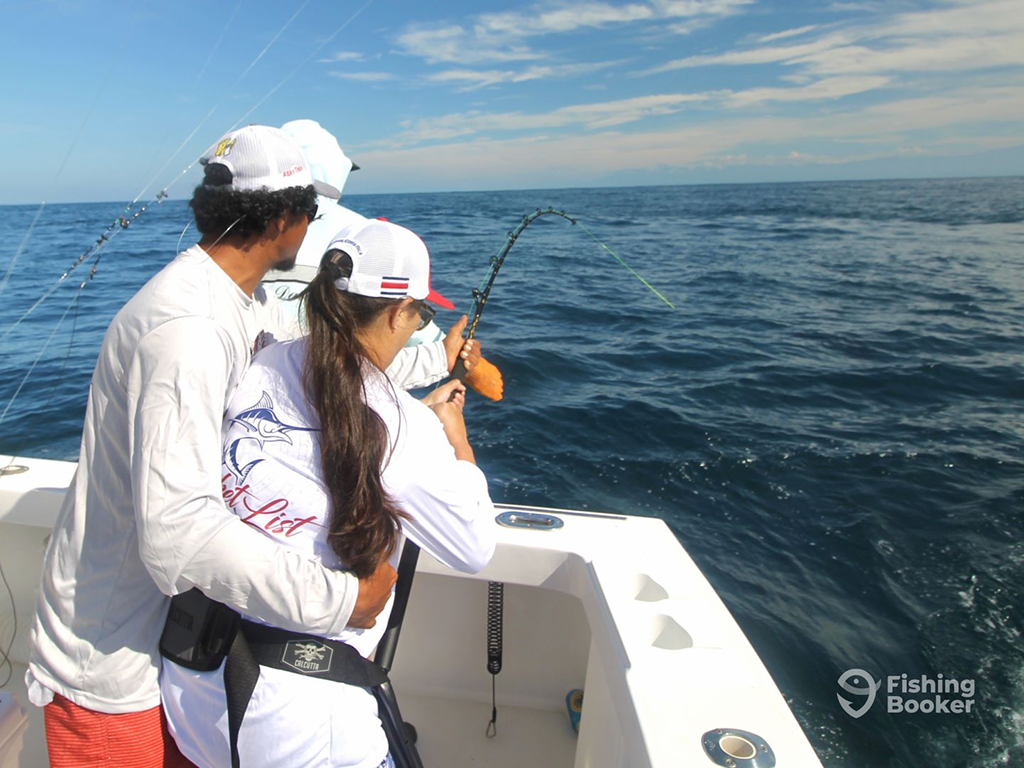
You can and probably should leave this to the captain. But for the DIY folks out there, rigging is critical for landing Marlin. Big Game leaders in the 200-pound range are common with crimps and heat-shrink sleeves used to connect to the hook. Using this system, you aren’t tying knots and are using metal crimps to connect a heavy hook behind a lure.
Many Marlin rigs use a single hook running at least 9/0 to handle the immense force exerted by the fish. You’ll typically rig the leaders and lures in advance and have them ready for use. The lures themselves come in a variety of styles. Look for visible colors that have a ton of movement in the water.
Attracting the Fish
Marlin are fast swimmers and they can appear and vanish in an instant. Ideally, you’ll find bait balls that Marlin love to crash. When the food is present, so are the fish. So, when you’re searching for Marlin in open water, teaser rods or kite rigs are useful – in conjunction with chum to attract the fish. When Marlin start trailing teasers, you should swap them with lures or baited hooks.
Marlin on the Fly

Surprisingly, these massive fish can be caught on fly rods. Teasing is especially important for fly anglers as it brings Marlin within casting range. While gear rods can tease or fish active lures at longer distances, fly teasers typically run shorter. When a Marlin starts hitting the teasers, you should quickly retrieve and cast to the fish. It’s essentially a bait-and-switch tactic that’s very effective.
Best Base Camps for Marlin Fishing Charters
Costa Rica has a number of different options ranging from very accessible spots to those more far removed. Although it’s a small country, the Pacific coastline is rugged with some very remote places. Luckily, it also has Marlin destinations that are a short trip from an airport. The country is geared towards tourism and you’ll generally find it easy to travel and choose a great base camp for Marlin fishing.
Osa Peninsula
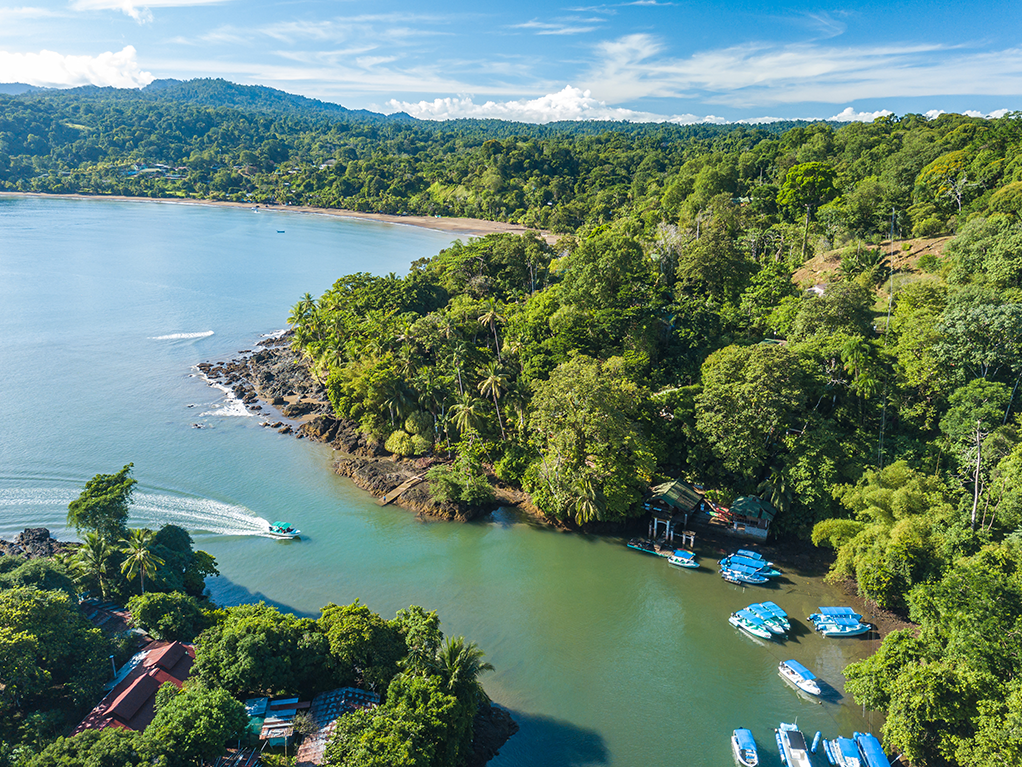
The southernmost region of the Pacific coastline in Costa Rica is a remote swath of jungle that is bordered by the ocean. The Osa Peninsula is off the beaten tourist paths and it has some exceptional opportunities.
Puerto Jimenez is the big jumping-off point for the southernmost fishery. You’ll find some world-class charters and lodges in this region. It’s harder to get here from major airports on your own but lodges can arrange travel on your behalf. You can catch Marlin year-round in this region, so it’s well worth visiting.
Manuel Antonio
Just south of the city of Quepos, Manuel Antonio is a popular destination for exploring the nearby national park. It has a section of coastline that’s protected from shore fishing is absolutely stunning.
The offshore action is hot here with major fish migrations and abundant bait fish populations. Nearshore anglers will find some huge Roosterfish and a ton of action for other species as well. Winter and spring are the best for Marlin action here.
Jaco
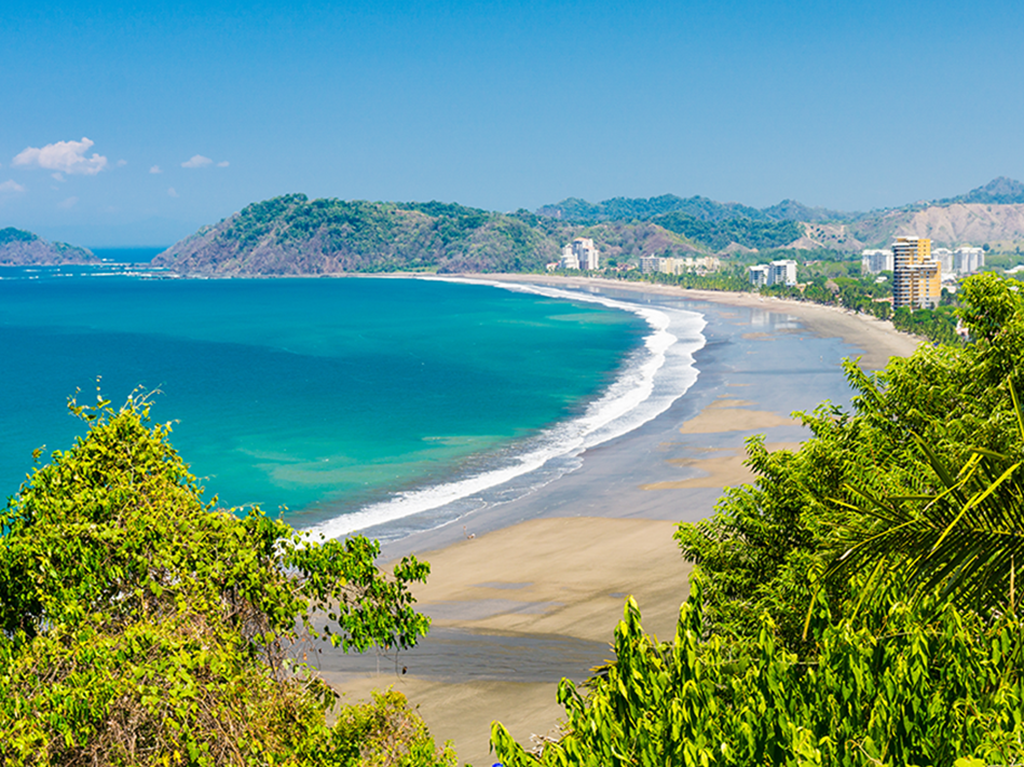
Convenient to the San Jose airport via a direct highway, Jaco is accessible but also not heavily populated. It’s a great location for a variety of species and there are some very experienced and successful charter captains here. It’s worth noting that Marlin are largely seasonal in Jaco. Plan your trip for December or January, or June or July to experience the best fishing.
How to Plan an Unforgettable Trip
If you want a successful Marlin trip to Costa Rica, planning in advance is crucial. Pay close attention to the seasons and locations I’ve listed in this article. Booking a great captain makes a huge difference in success rates, too.
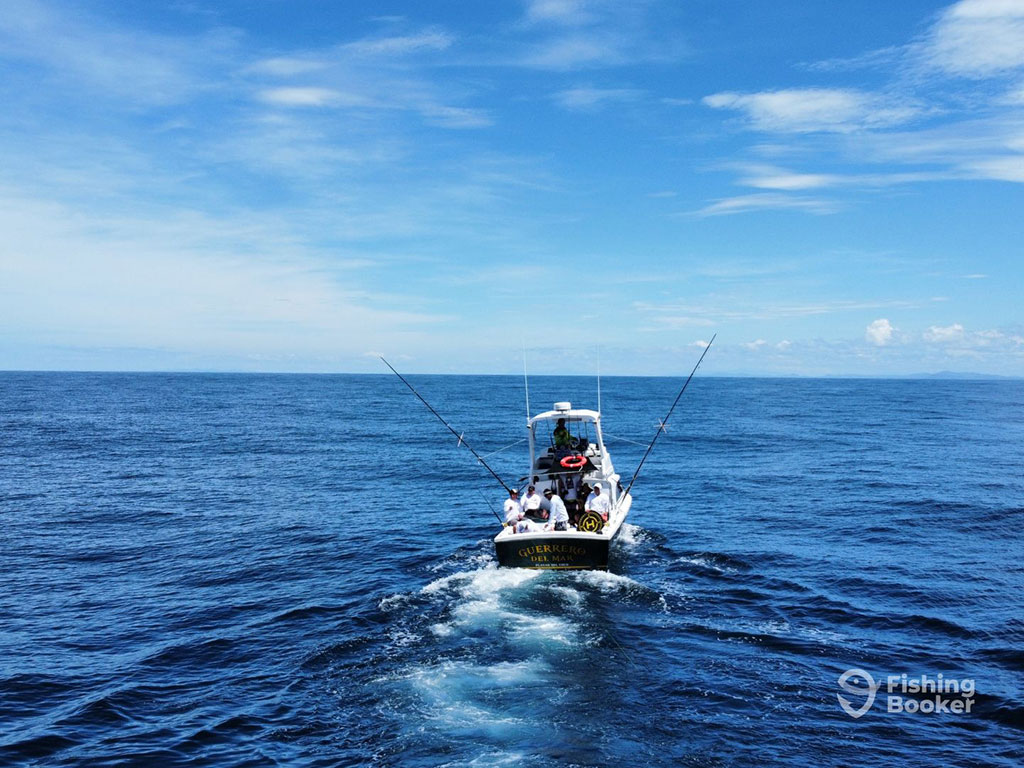
Costa Rica has great infrastructure and it’s pretty easy to book accommodation that suits any budget. You can grab a vacation rental on the beach and do day trips with a charter service. If you want the full package, however, consider a fishing-specific lodge located on the water.
Marlin are exceptionally strong and it helps to train ahead of your trip. Do strength and endurance exercises and prepare to grip the rod tight while battling one of the fastest and strongest species in the ocean.
Other than that, just make sure to get your fishing license from the INCOPESCA website. Or, reach out to your captain and see if they can assist. Then, you’ll be good to go.
Costa Rica Marlin Fishing: Your Dream Trip Is Waiting
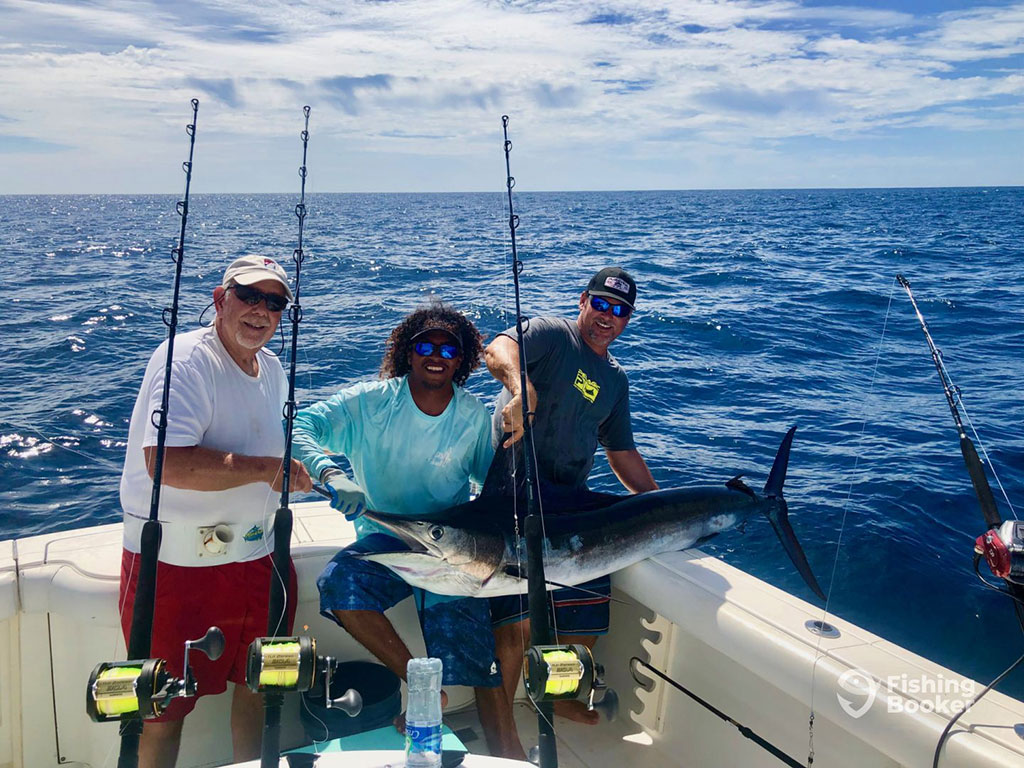
After you book a flight, lodging, and your charter, get ready to head out early and spend your days chasing this incredible species. Marlin fishing in Costa Rica is a serious rush. When you hook a big Marlin and it makes that first jump and line blitzing run, that moment will stay with you forever. Buckle up and bring a camera to record the action on your next Marlin fishing trip.
Have you ever been Marlin fishing in Costa Rica? Where did you go? We’d love to hear all about your experience in the comments below!
The post How to Go Marlin Fishing in Costa Rica: An Angler’s Guide appeared first on FishingBooker Blog.
https://ift.tt/PVs8x9L
0 Comments
Enregistrer un commentaire